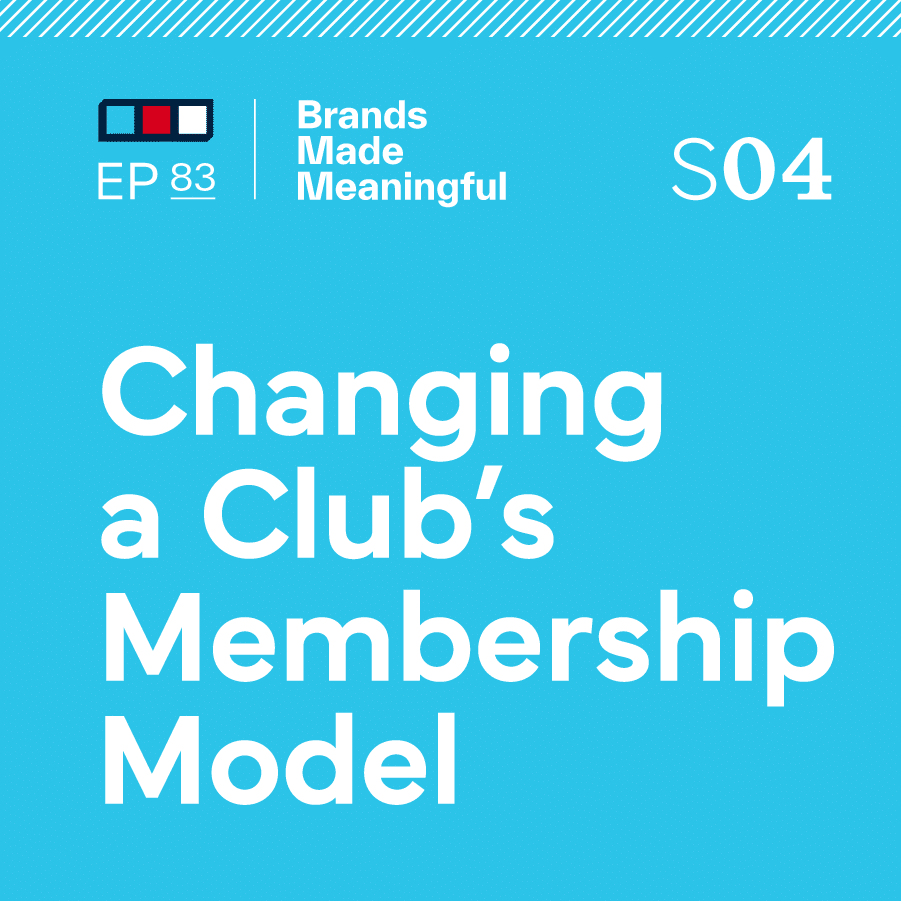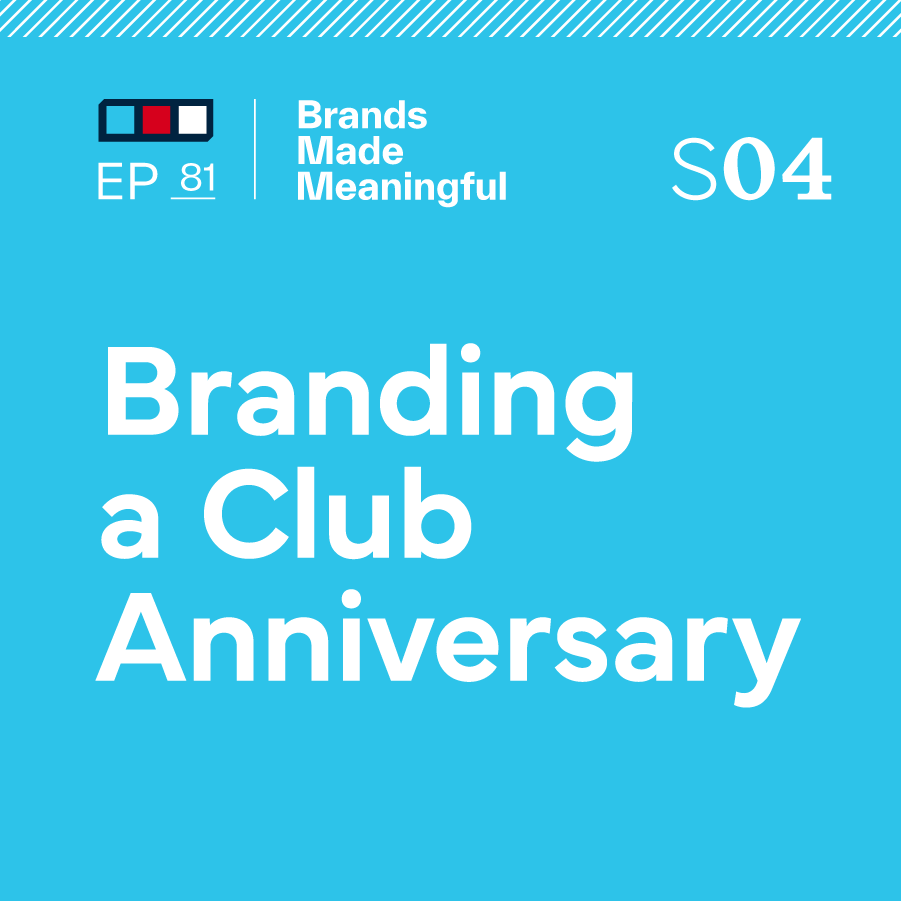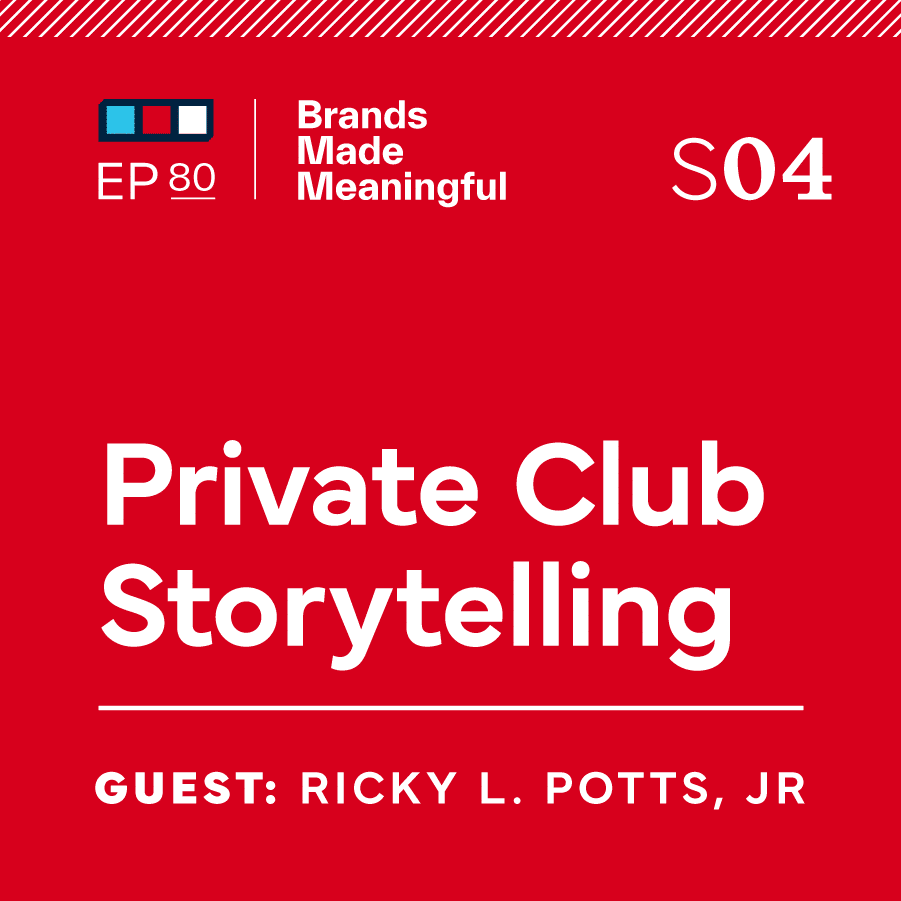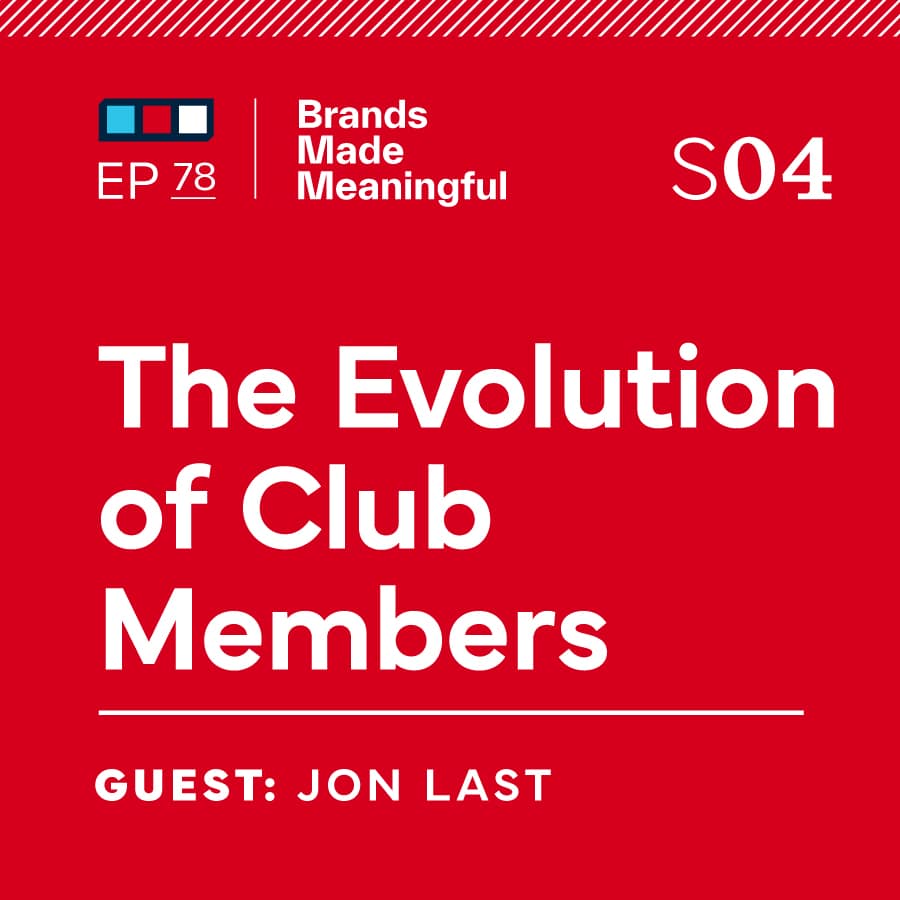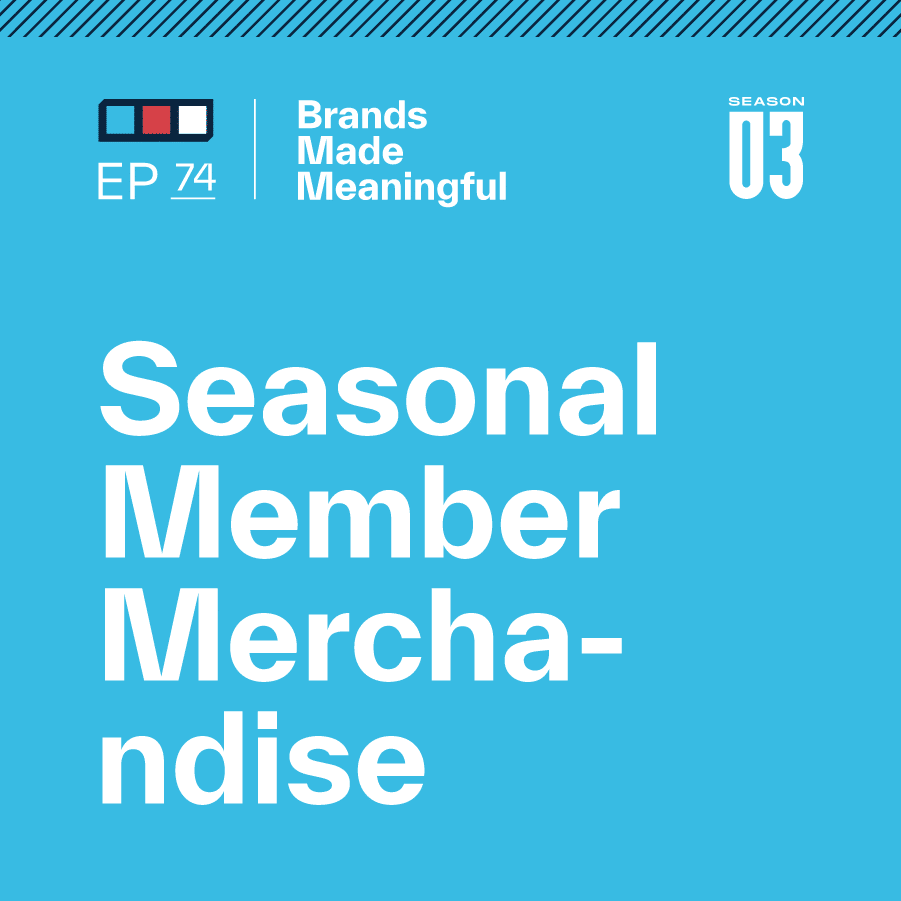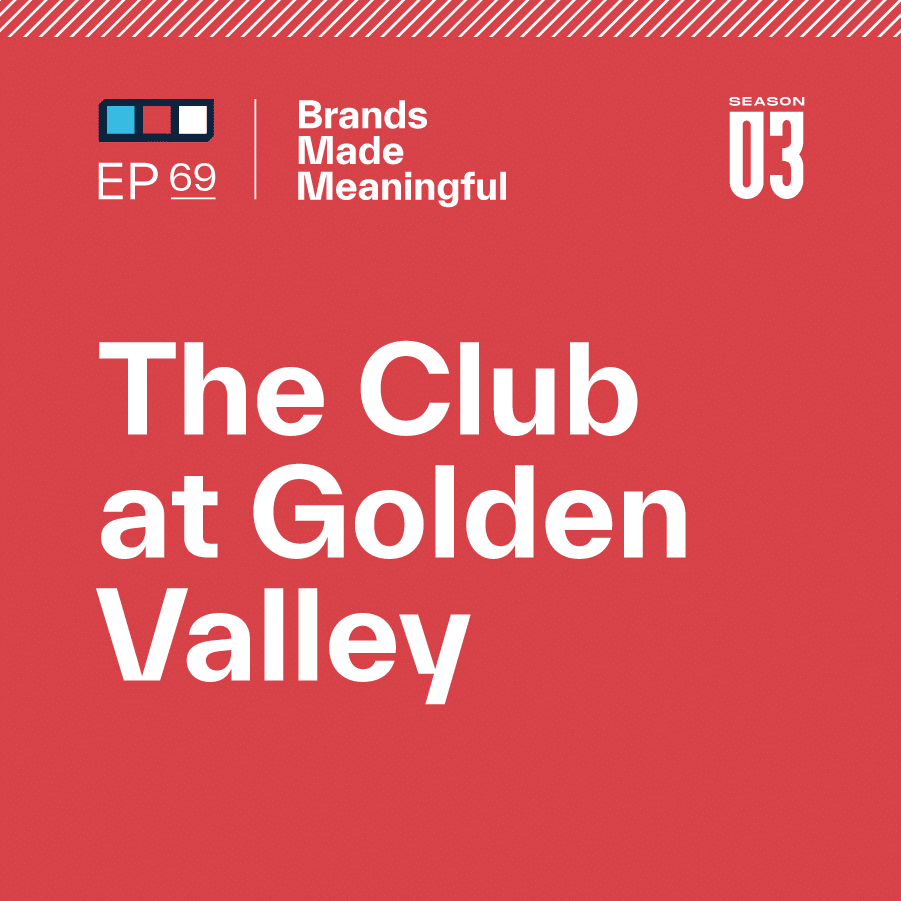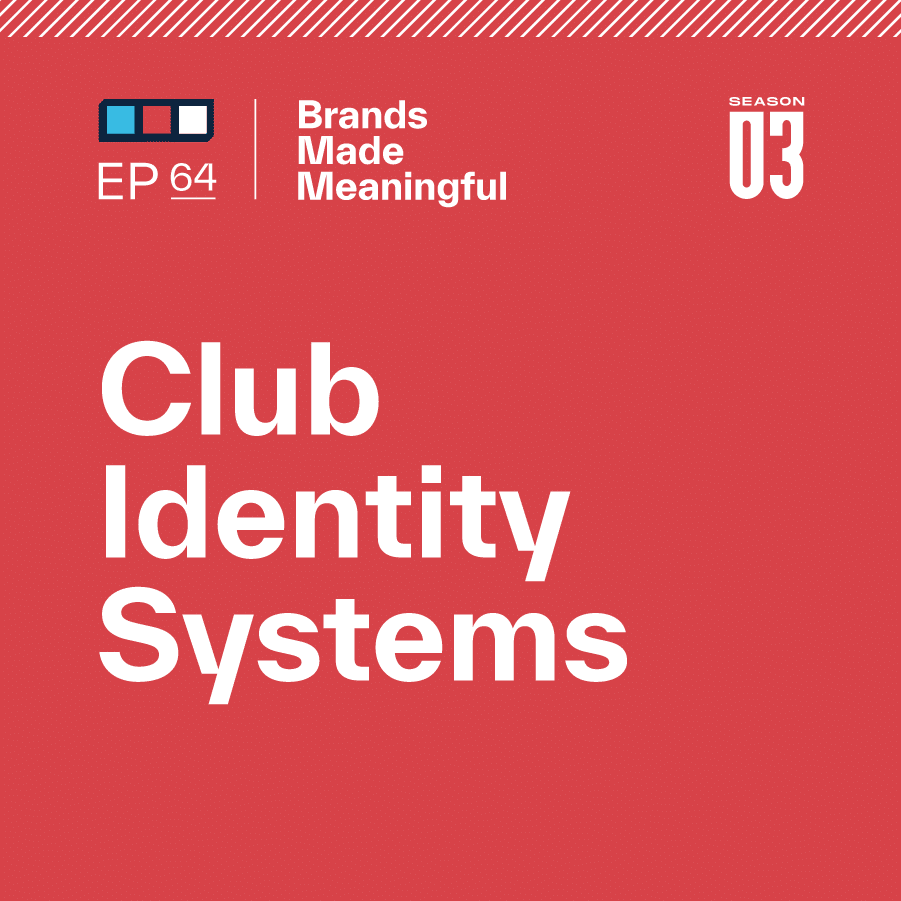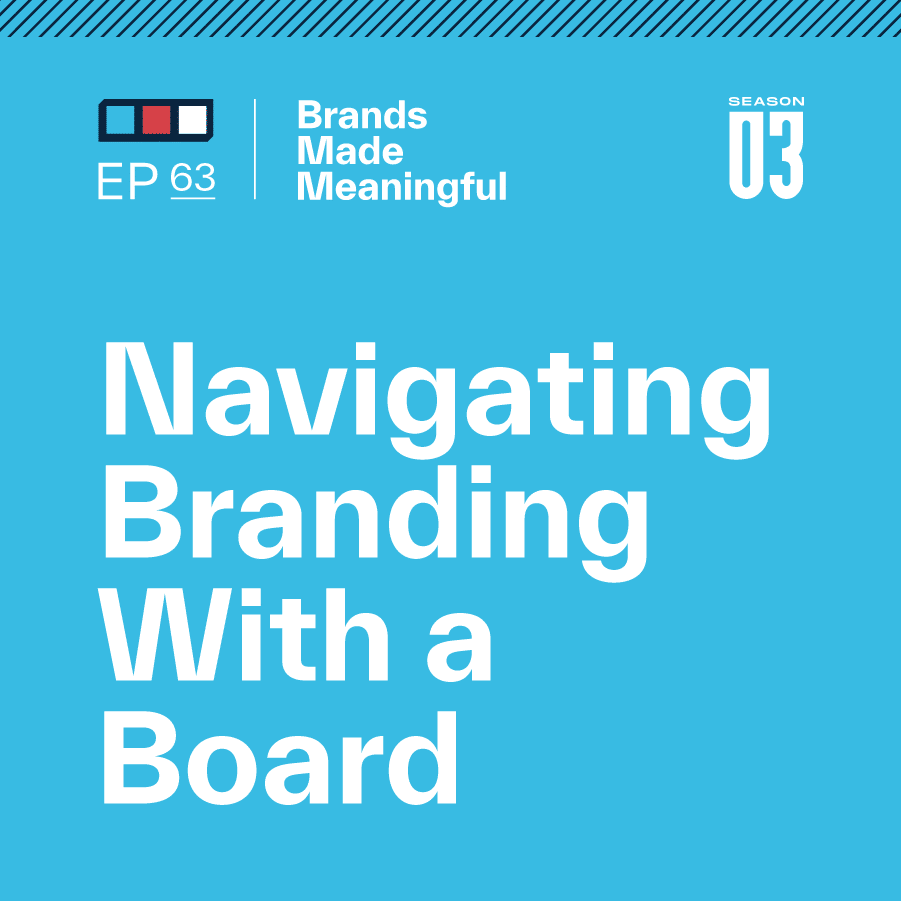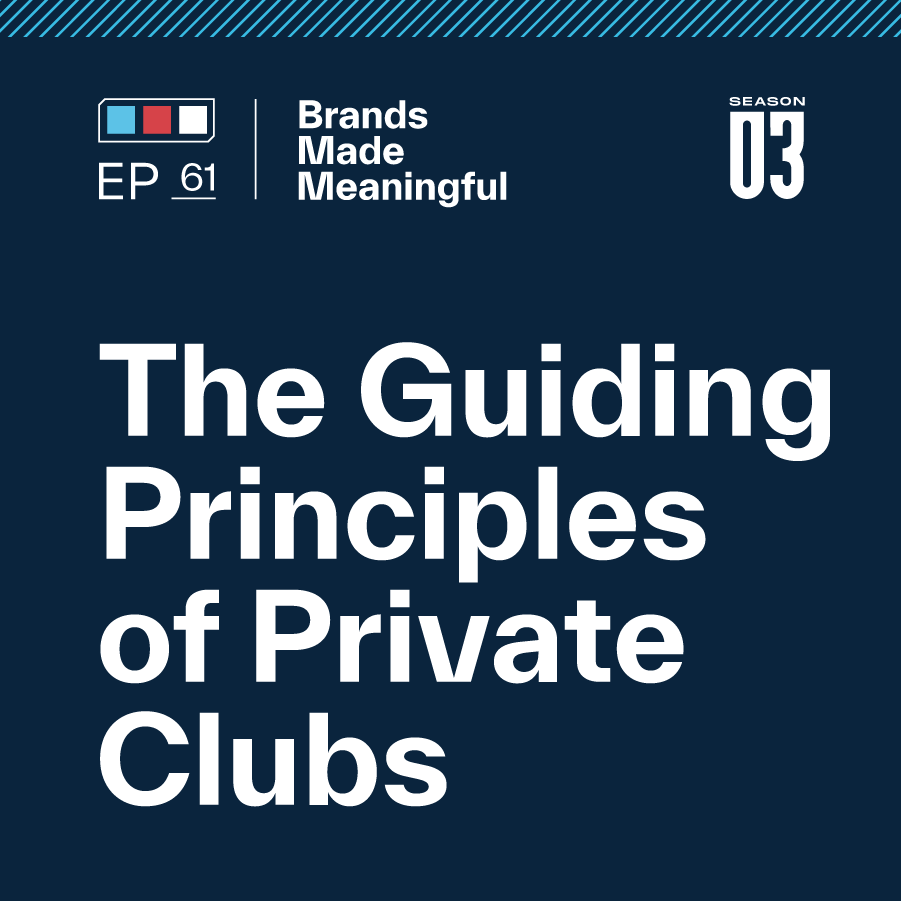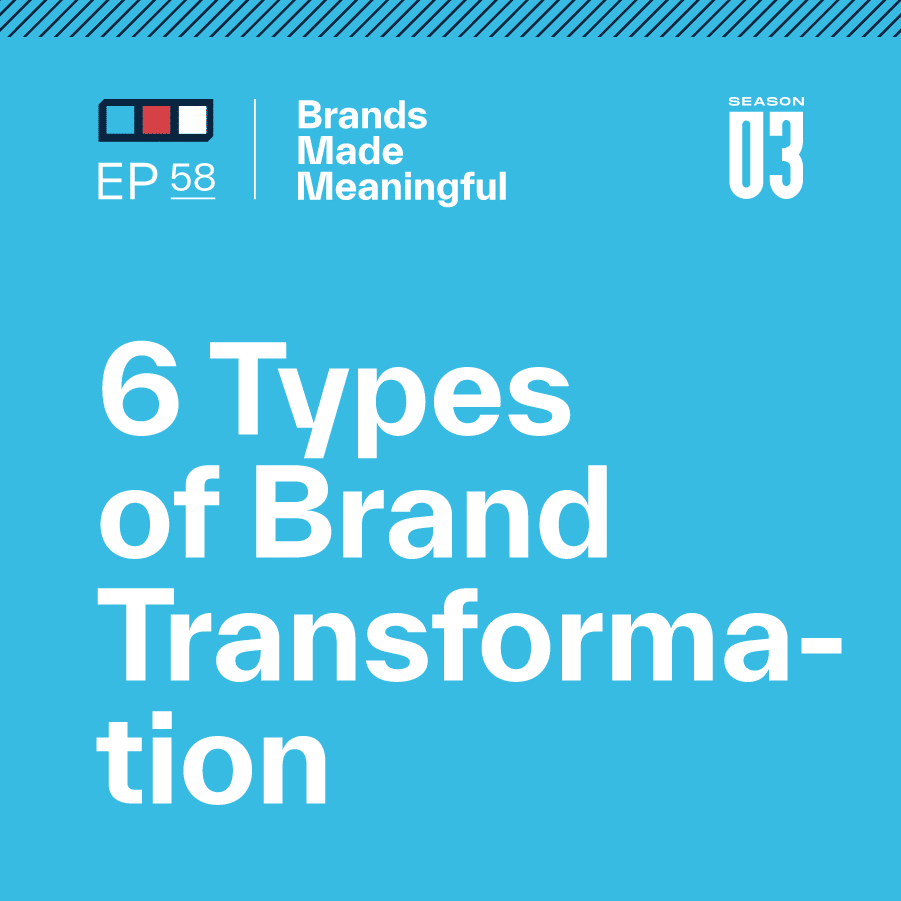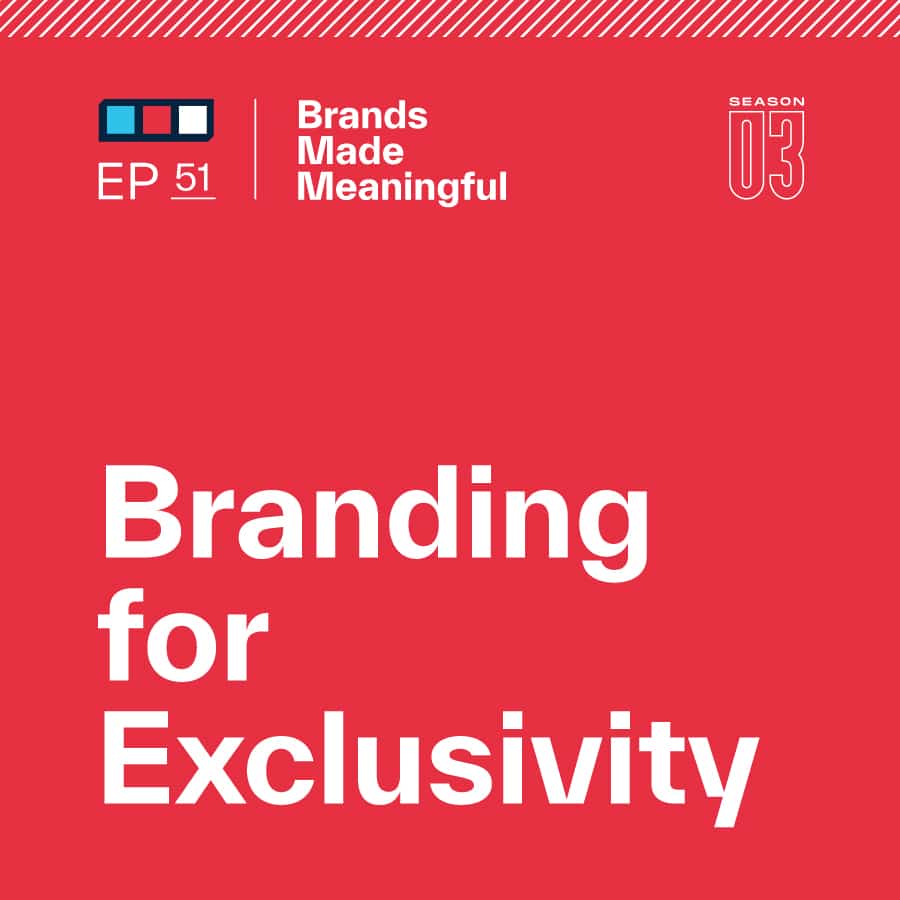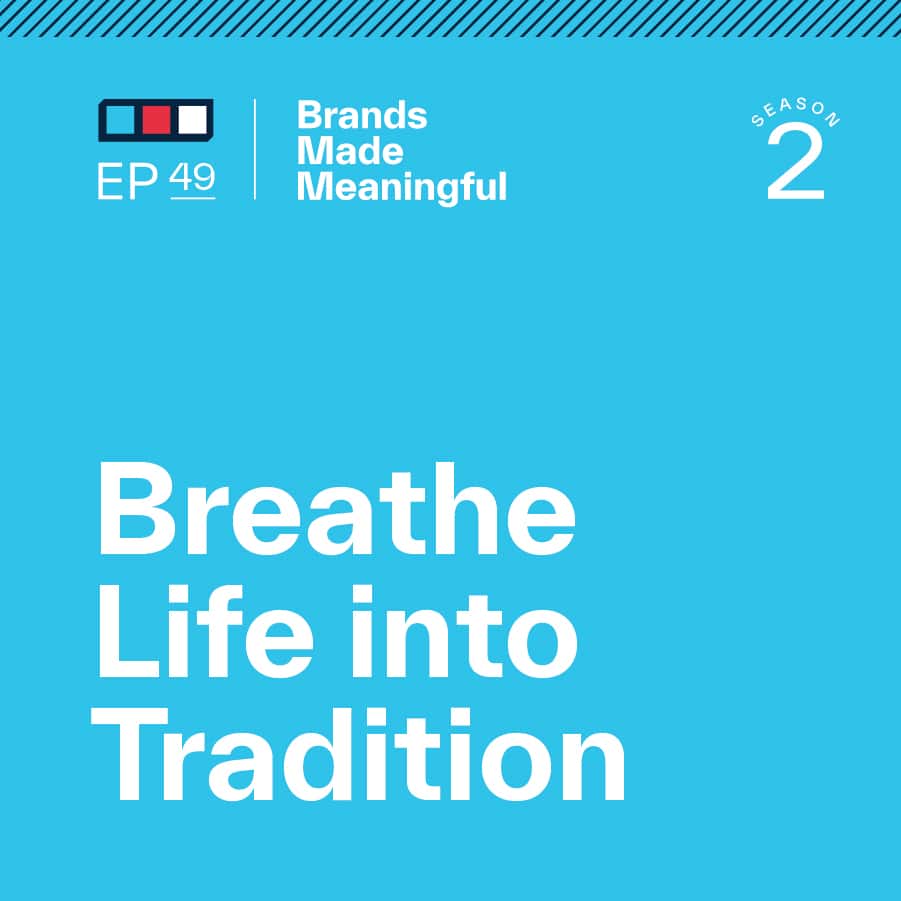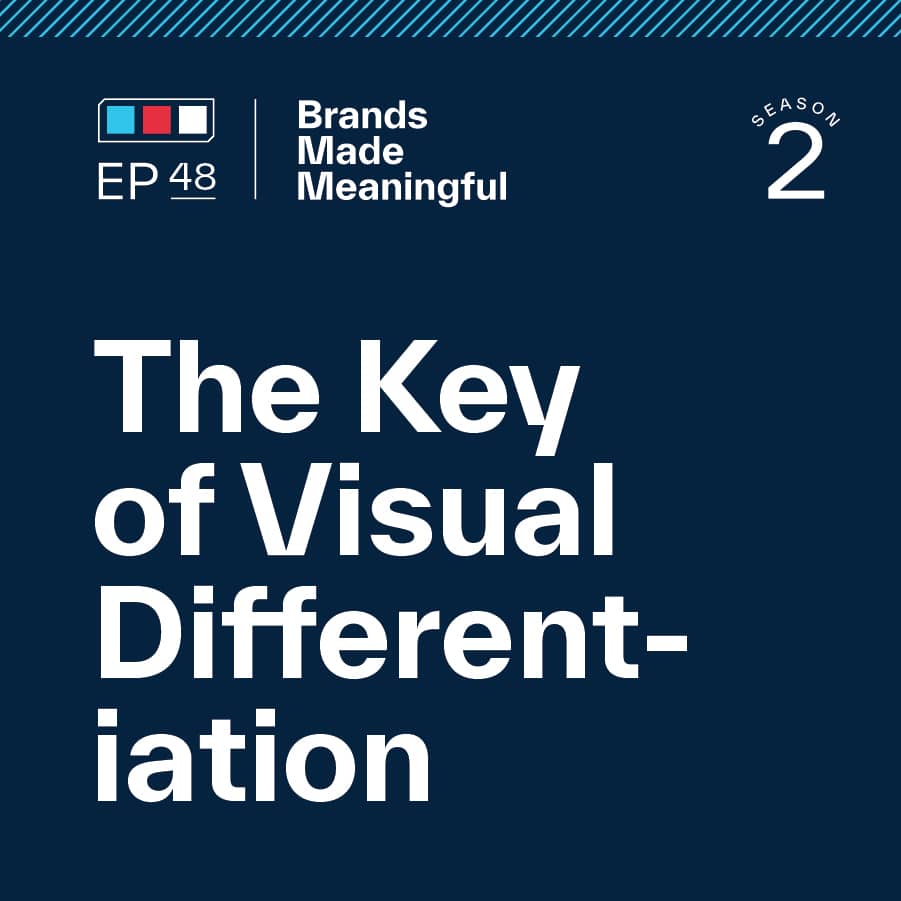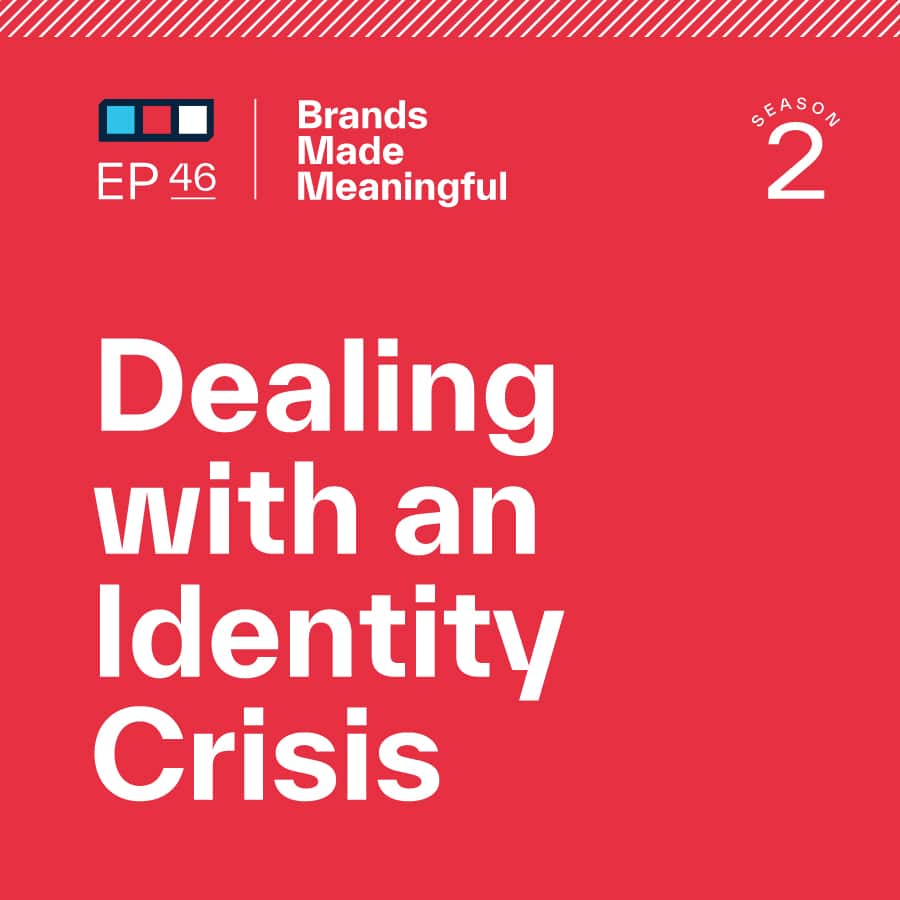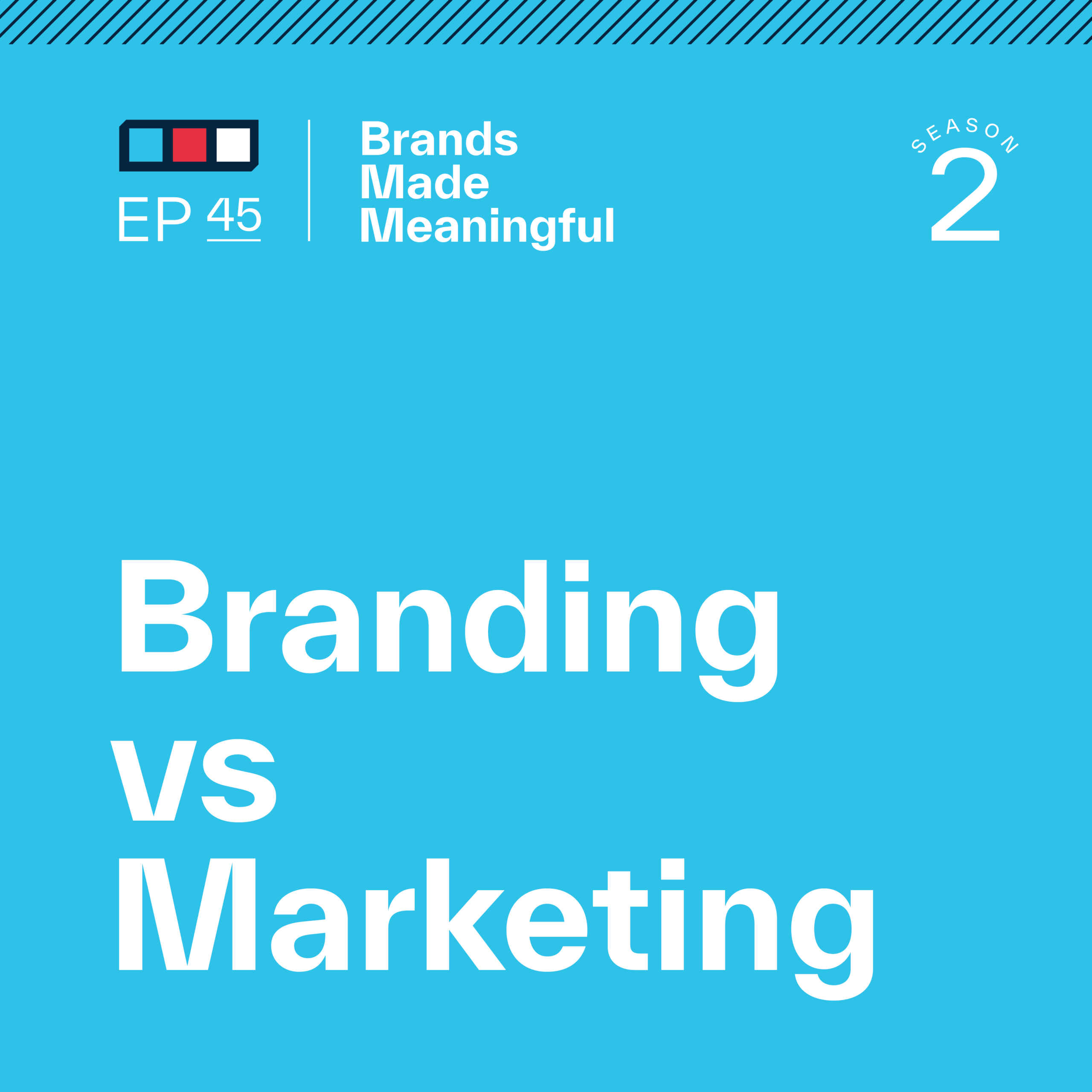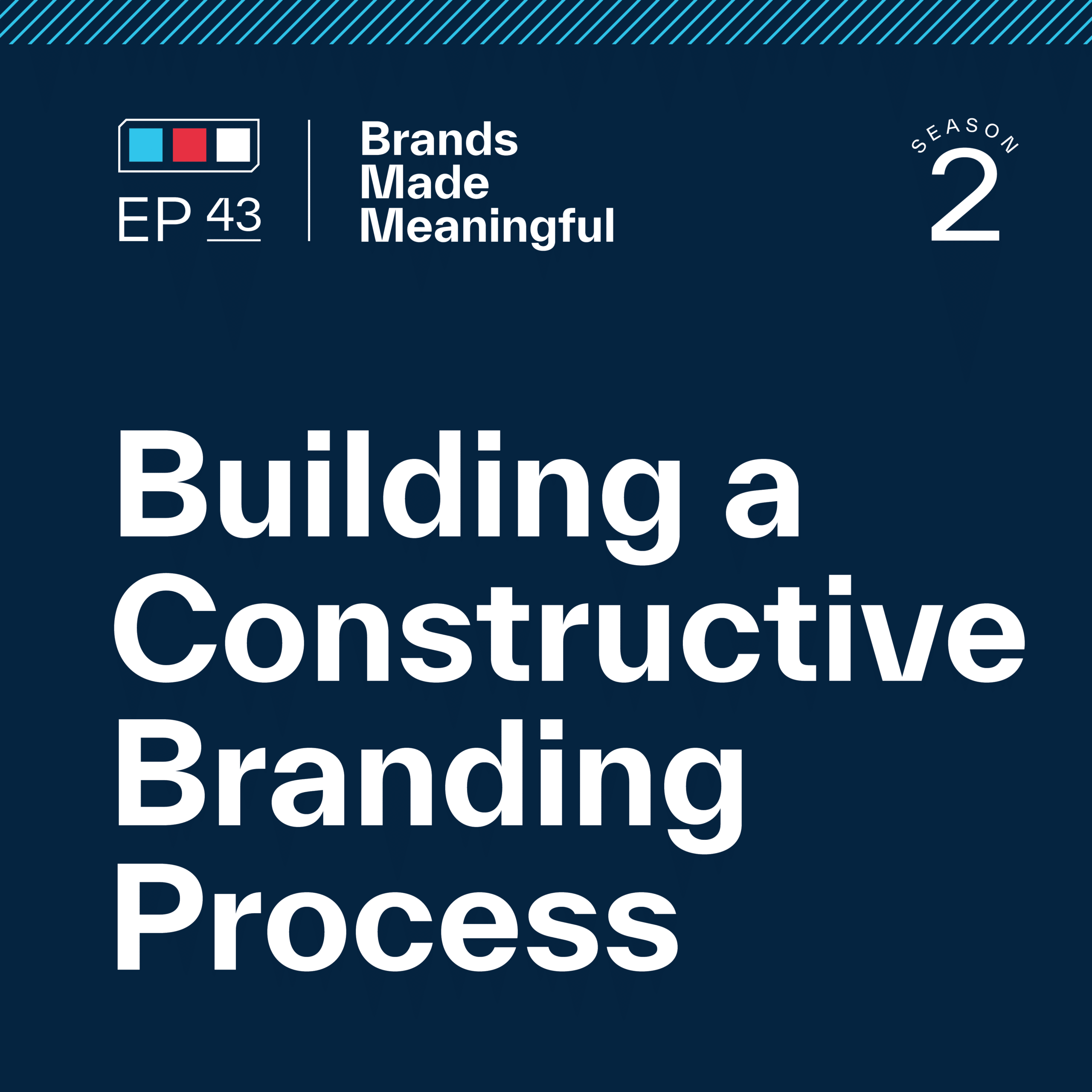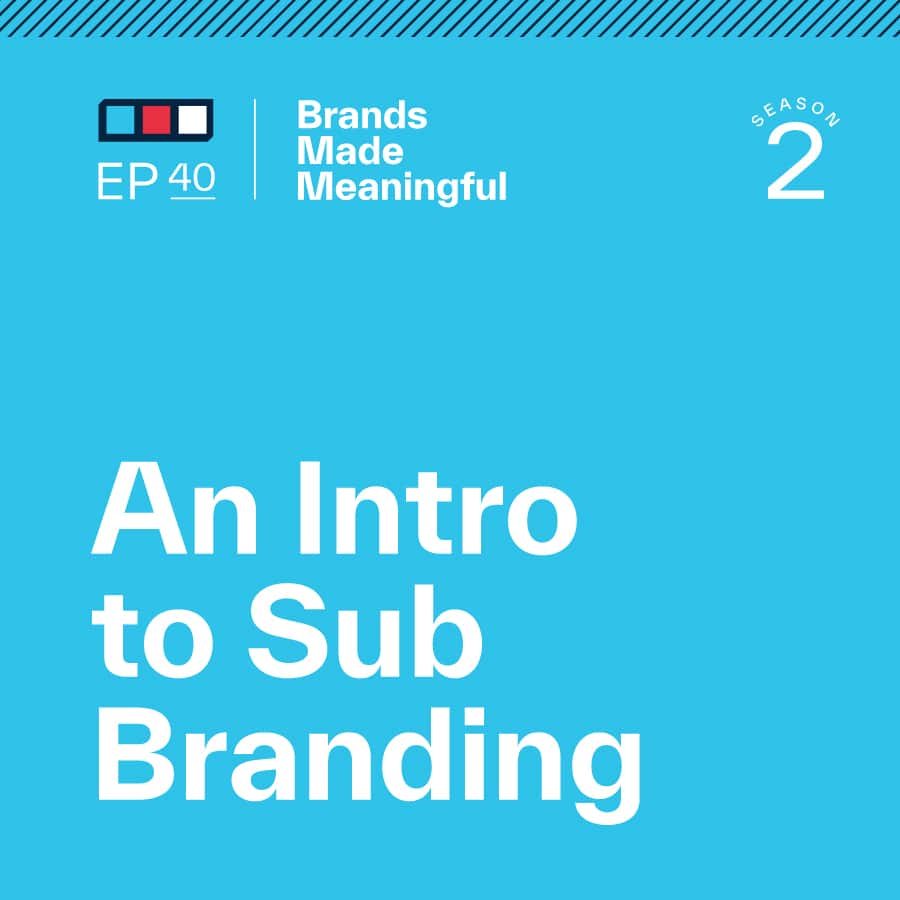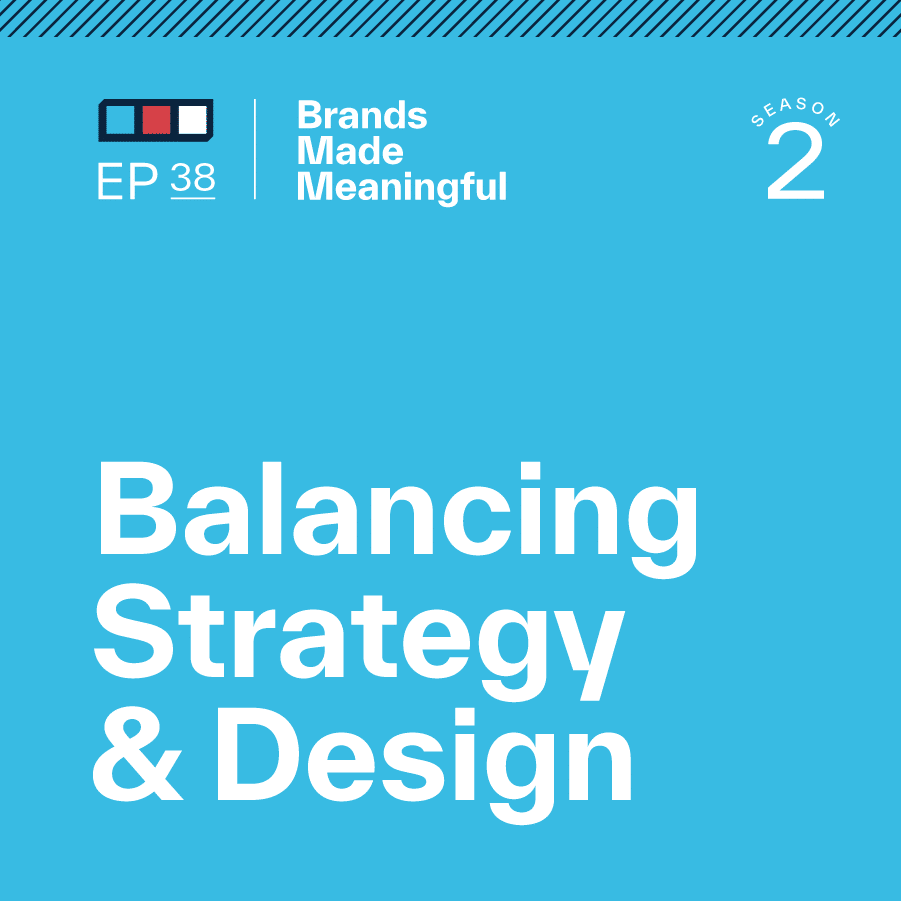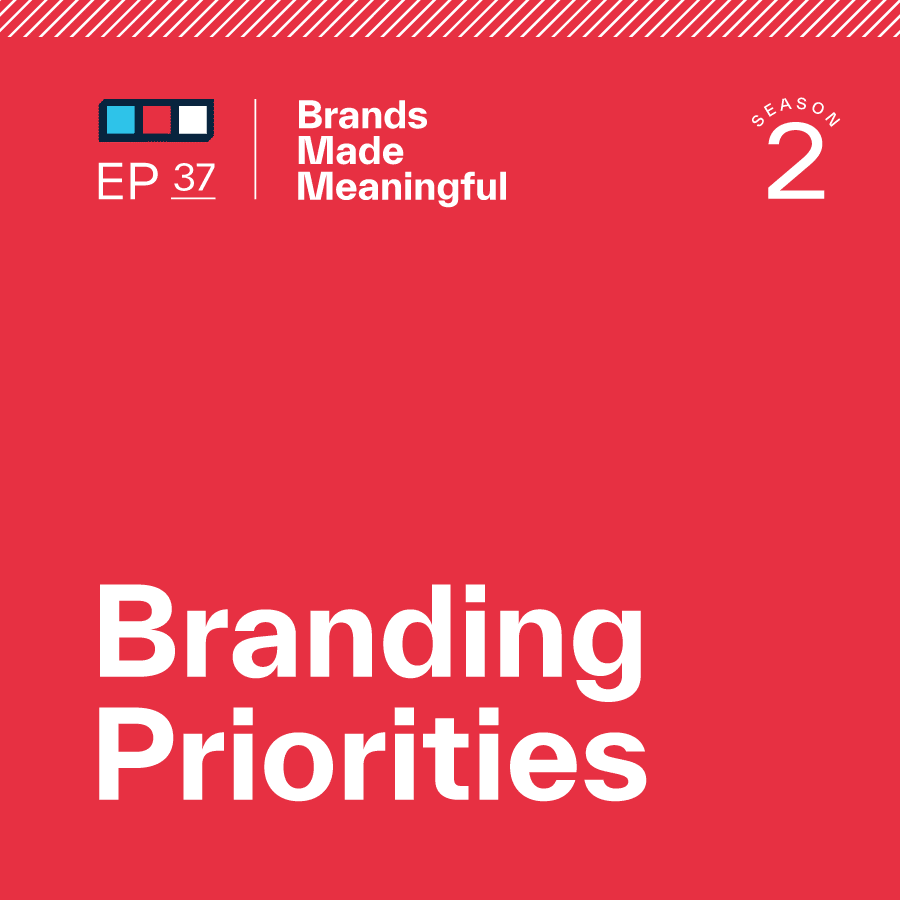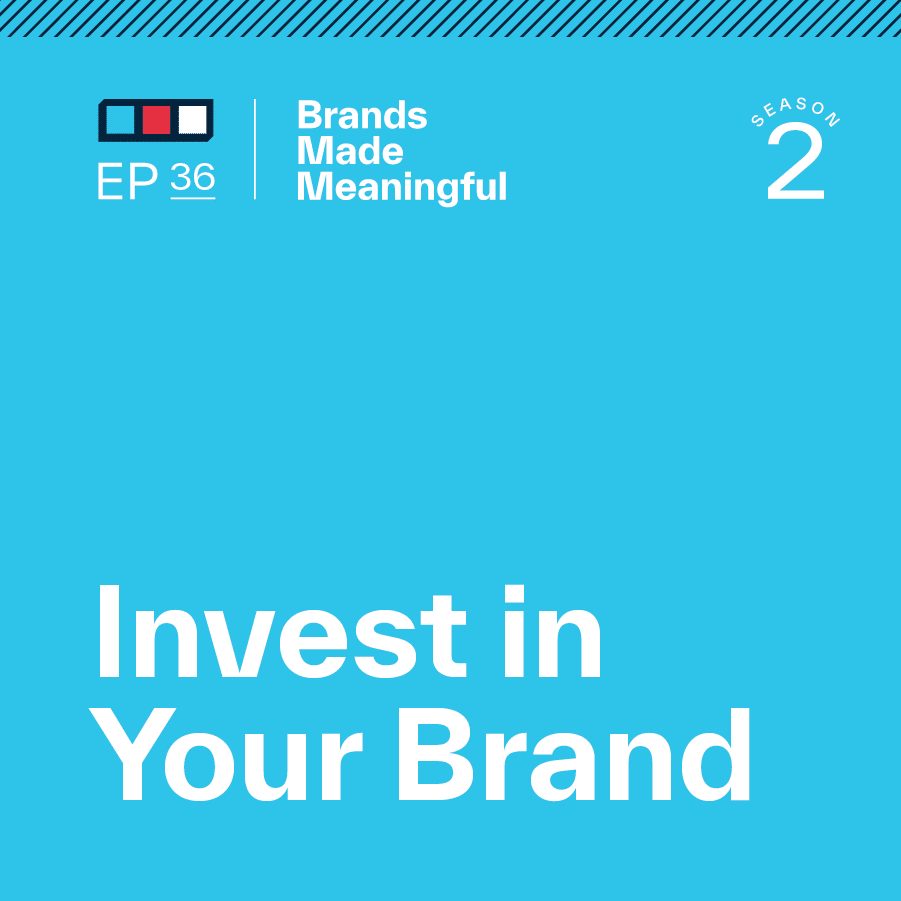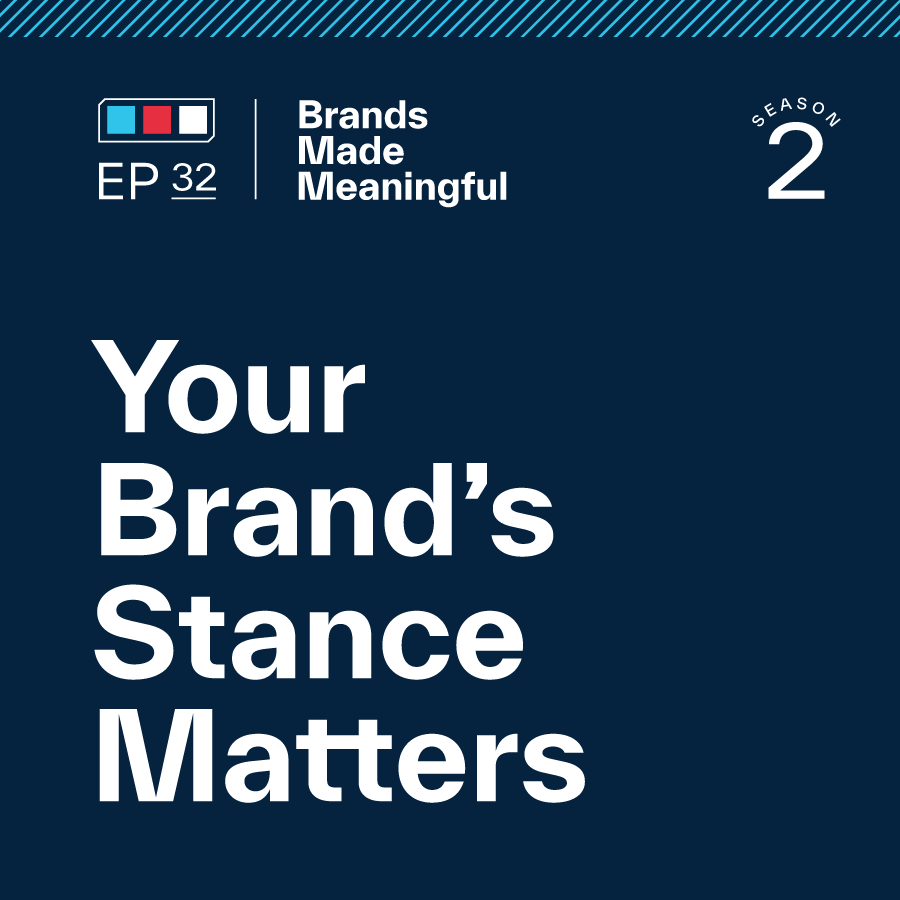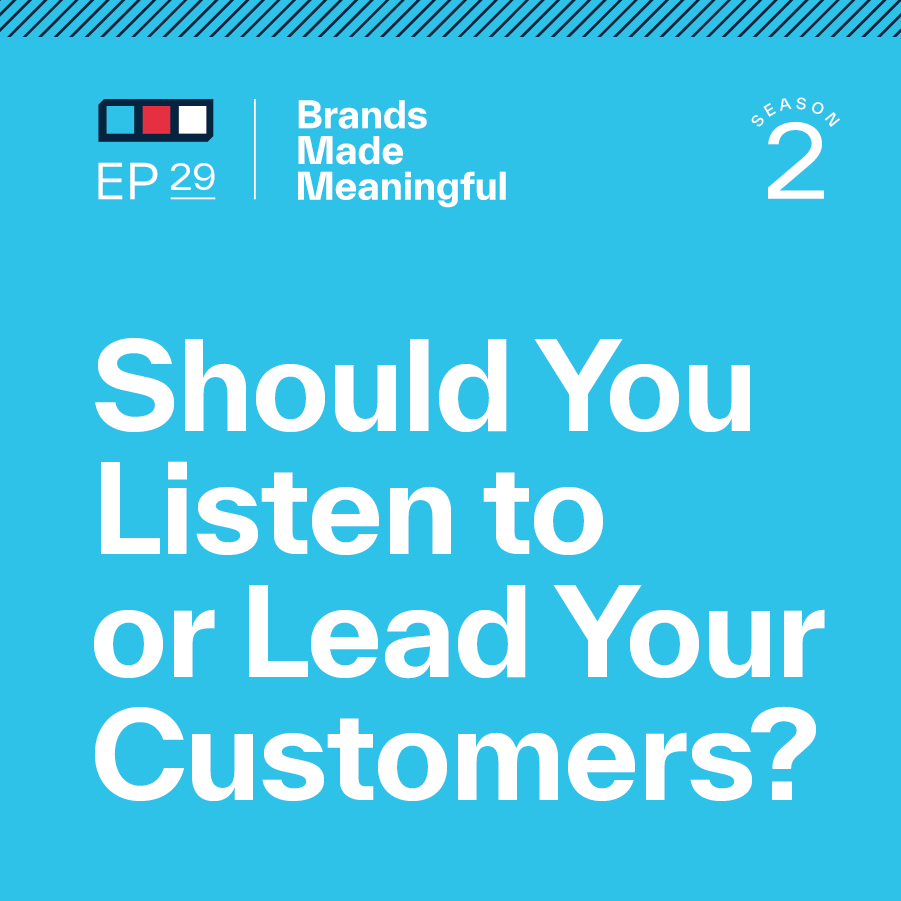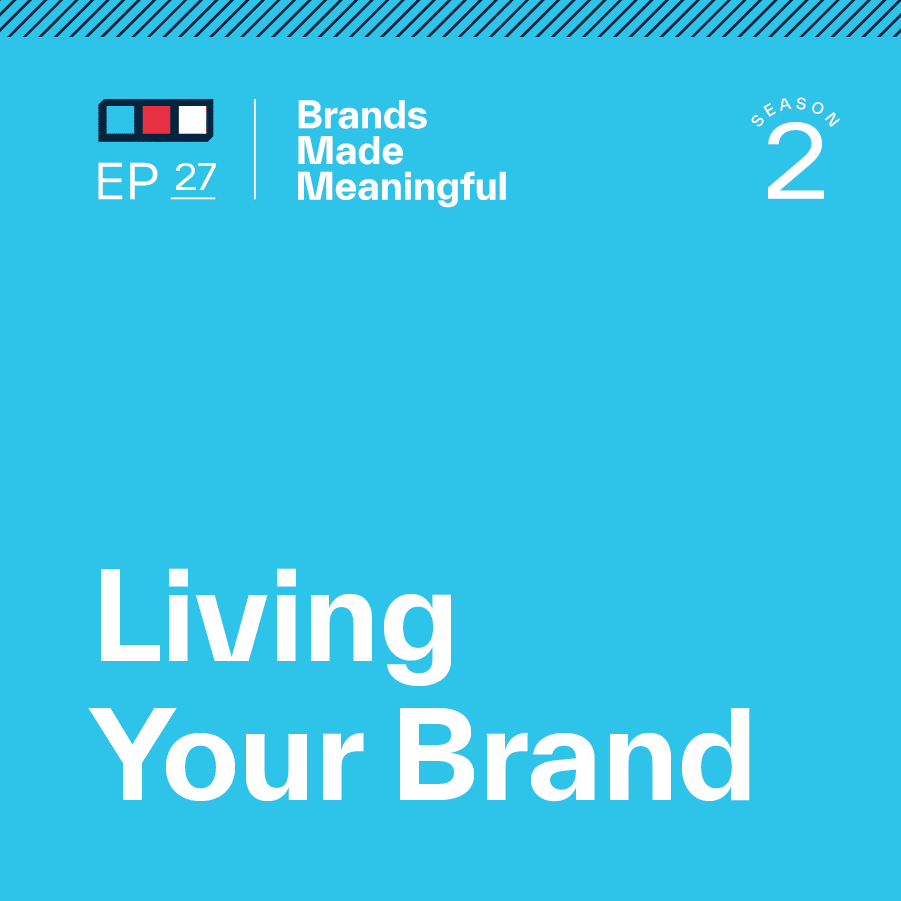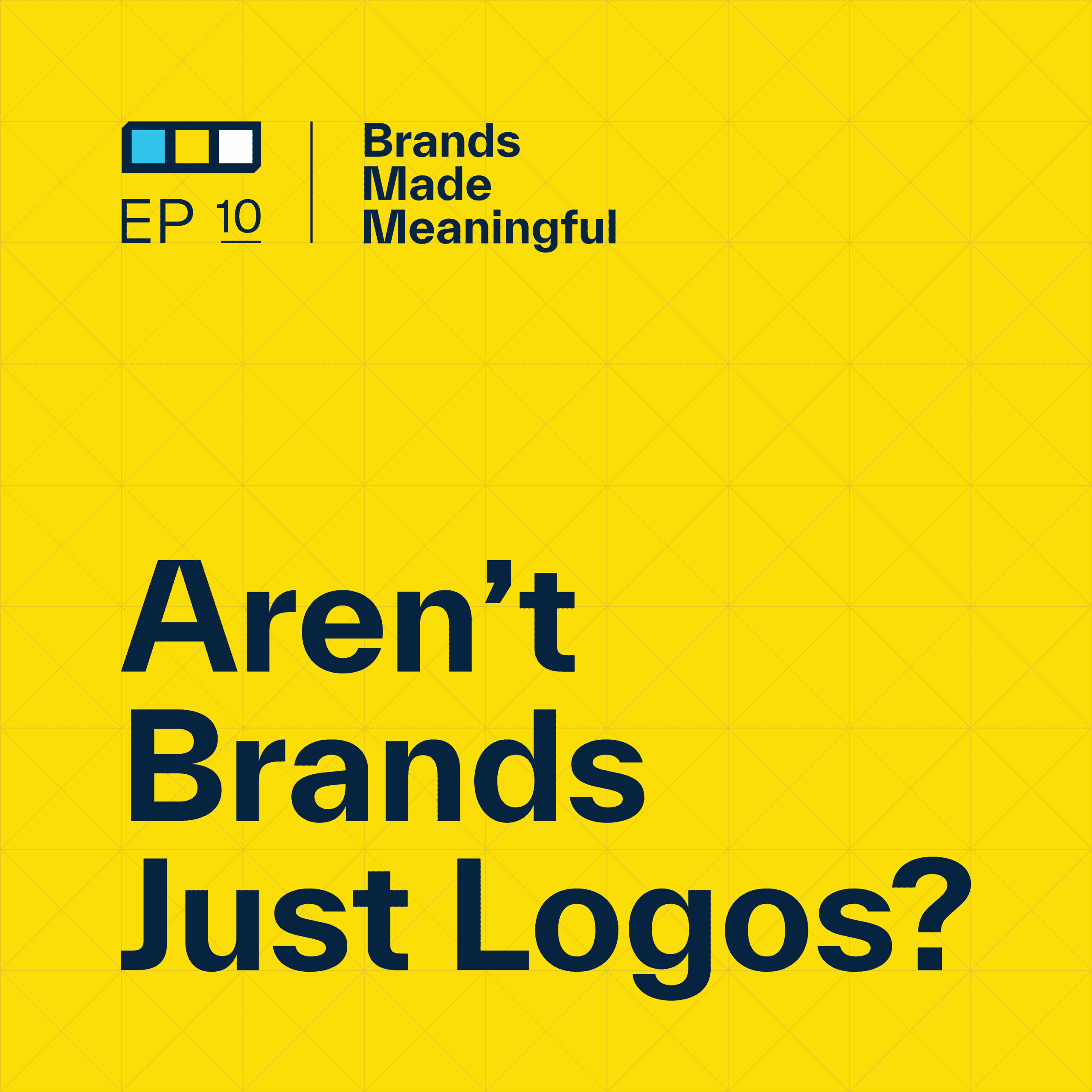EPISODE 12

The Value of Stereotyping
Episode 12
Derek and Tucker sit down today to discuss the meaning of stereotyping within the branding world.
EPISODE TRANSCRIPTION
Today we’re talking about stereotyping.
Derek
Tucker, I’m looking forward to this conversation today.
Tucker
Yeah, profiling.
Expand Full Transcript
Derek
But what we’re talking about it through marketing and branding lenses.
Tucker
Yeah, this is a part of our process right after the research. So if you haven’t listened to the research part, there is an episode where we go through all the different ways we have research and once we get that research, how do we use that research is the question. So this is how we use it, but you’re right. In normal society, normal conversation stereotyping is very negative, like, if you just got stereotyped and that’s usually not a good thing.
Derek
Yeah, but looking specifically, you actually looked up the dictionary definition of what the word stereotype means.
Tucker
Yeah, so the definition of a stereotype is, “An over-generalized, widely accepted image or idea about a person or a group of people.” And so if you think about it in that light, this is perfect for what we do. To kind of take what we do and narrow it into a category; categorizing it. But in the context of branding, we’re going to use stereotyping to simplify and develop a story from that research, like I mentioned. So when we do qualitative and quantitative research, with those insights, what do we know? Who are we going after and what is that target audience?
Derek
In branding or in marketing, especially in marketing or messaging, when you start creating the components that are trying to engage and attract and connect, maybe you’re testing messaging, what messaging works- if you don’t know as specifically as possible who that messaging is intended for, then how do you know what to say to them? How do you know what it is that they want? We were just talking with a client of ours who is targeting financial institutions. And our conversation went down the line of who inside that financial institution will most resonate with what it is that we’re talking to them about. And we might have got to the team or the group, and our goal would be to get even further and say, what’s the face and the person and the role within that team, within that organization that is most going to resonate with what it is that we’re trying to talk about. And the more that we know about that person, the more effective our communication will be.
Tucker
What do they need? What do they want?
Derek
What’s their problem?
Tucker
What do they hate? What kind of language would really not resonate with them? What kind of visual styles would not resonate with them? Where are they at in their lifecycle? What do they do on a day to day? It’s to figure out some of those things, and through research, depending on how much research we could do based on budget and timeline, we can get more of those answers or not. I think the biggest challenge is to take those and to really understand from an internal perspective with our clients is to say, “Okay, so this is your customer, this is what it’s all for.” And that helps us build this purpose for how we are going to market ourselves, and it matters your intuition a little bit, but we’ve done the research. This is what your customer wants. So let’s use that to the best of our ability.
Derek
I think most of the companies that we work with have a pretty solid understanding of who their customers are and the specific people on that customer side. I mean, customers, consumers, buyers, whatever; that takes a lot of different forms depending on what it is that you sell. And I think most people do a pretty good job of watching the data and understanding the demographics and the pain points of who those customers are. But I get a daily email from the Carney Group, which is called The Daily Carnage. I’m happy to promote that, they are another great digital agency based out East, I think.
Tucker
No, Idea.
Derek
I don’t know either, sorry Carney. But they share some really great data and they did a survey a little while back that confirmed and said about 70% of companies do a really good job of using buyer personas to guide their marketing strategies. But what about the other 30%?
Tucker
Yeah, and that 70% is normally the larger organizations, right?
Derek
More sophisticated.
Tucker
We had a client last Friday, we were in a meeting where we were gathering data. Right? So we’re at the beginning of this process with the client and we’re gathering the data to say, “Okay, what are we going to try and find out? How we’re going to do this?” And we got to the end of this two-hour workshop meeting and the client goes, “You can get all that? All those answers? You know all that stuff?” And it’s like, “Well, we’re going to find it out!” “Well, how do you find that out?” So there’s a great way to figure out things that some people who haven’t used data before or haven’t understood, so what is the research and doing that stuff? They didn’t even know that was possible. So being able to say, “Okay, this is possible, how do we use that?” It becomes really important. So we’ll get into why it’s super important, but before we do that, I just wanted to say, we understand when we build things, stereotyping is how we craft it from the beginning. But those ideas and all of those preferences do vary for people. So if we’re talking to moms, say we’re working with a sports organization that’s marketing to moms specifically. We use a mom persona or a mom profile in her story, but I mean, we recognize that the people do vary. Not every mom is the exact same. So this process will help us narrow in and become smarter, but there also is variations based on, “Okay, well, once we actually get to market and it turns out that we have a lot of moms that like this and a lot of moms are like this. So we need to split and go two ways with that.”
Derek
Yeah, we’ve actually worked with a customer where ‘Mom’ was a key part of their audience. And we worked with them to figure out and determine for them, it was actually “mom who works.” We called her, you know, whatever, soccer mom. And we’ll often give her a stock photo face and the name because it helps put a human being to this person. Is it a stay at home mom who’s raising her family? Or is it a corporate mom? Is it mom that actually coaches her kids soccer team? So we can drill down on that, and get pretty granular. But without knowing who that customer is, then how do you know what? And how do we know what they’re looking for from you?
Tucker
There are fantastic insights in there! To say, “Okay, let’s take that example for mom and say, okay, well, she goes to work. Where does she shop? Does she shop at Target or does she shop at Walmart? Or maybe she shops at a local grocery store. What kind of products is she buying? What kind of food does she like?
Derek
Does she drive to work? Does she take the bus or does she carpool with somebody?
Tucker
There are some great insights in there to say, “Well, maybe we aren’t a food company, but understanding what kind of food they eat, and what kind of food they feed their family might really help in the way that we market to them.” So you’ll find insights in places that you wouldn’t think are insightful. But when we do this profiling or the stereotyping, it really helps us break into categories of what that brand needs to fulfill. So we normally will have somewhere between three and six categories of saying, “Okay, so here are the 3 to 6 types of people that we’re serving.” We do this for internal brands, we do it for external brands. But to say, who are we talking to and what messaging buckets need to be filled? Because we’re going to have to market to each one of those at some point. And then how do those line up to the overarching brand and the message that we’re stating to everyone? And that’s how we really work things; we start with a profile.
Derek
Yep, yep! So this is all the positive side of stereotyping and profiling; it’s understanding, it’s clarity.
Tucker
And we’re not going to get into the negative of stereotyping; that’s no fun.
Derek
So for example, if you don’t know who your customer is because you haven’t taken the step of studying them or figuring out who they are, what’s something that an organization might be challenged with or experiencing in terms of their marketing if they don’t know who their customer is?
Tucker
A common symptom that we see when a client comes to us and they say, “Hey, we got a problem. Our product satisfaction or our service satisfaction is incredibly high. Everybody loves what we do, but we just don’t have much conversion rates. We don’t have people like knocking down our door to take our products, but when they do, they love it.” And that means that people within the target market who use the product really enjoy it; it’s right for them. However, you’re very limited number of groups that are engaging with you, just don’t resonate with the way you’re saying things. Meaning you probably don’t have creative, whether that’s verbal or visual creative, that resonates with them, draws their attention and holds it long enough to say, “Yeah, this could be something for me.” And normally when we talk to a client that doesn’t have profiles, they don’t quite know they’re a customer. So they’re not saying anything to them or they’re saying the wrong things to them.
Derek
Or they’re marketing in the wrong places.
Tucker
Yep, and then if we can do those profiles, that’s going to give us great insight into, “Okay, what do we need to say to these people and where are they consuming this content?”
Derek
We work with a local pizza franchise and when we started working with them, they hadn’t taken the step of doing any sort of customer insights and understanding. They’re really focused on making great pizza and getting it delivered on time. So we took a step, a small step of doing some surveying and understanding their customers, and we landed on working soccer mom and recent college graduate as the two people that were the most likely to buy their pizza the most often. And one of the locations where they were currently spending most or all of their marketing and advertising budget was with the local professional basketball team. So our question was, is a recent college grad going to the games? Can he afford to go to the games? And is a soccer mom going to those games because a lot of this advertising was done in partnership and on-site with this basketball team? Or are there other locations and places that a soccer mom, who is 80% of our audience, who’s looking for a healthy but yet fast solution to feed her family tonight because she worked all day? Are there other locations that would be more appropriate to place that money? So I’m not saying that marketing with your local sports teams aren’t appropriate, but I bet there are other sports organizations, maybe at even a smaller, more local neighborhood level that she’s going to see and emotionally connect to way more than the other location. I don’t know what we had determined, but the customer base of this this professional basketball team was not soccer moms.
Tucker
It just wasn’t the right fit for the marketing opportunity.
Derek
So it was a relatively, I want to say, easy and eye-opening solution to instantly improving their marketing efforts by shifting the places and the language now that we know who we’re talking to.
Tucker
And we run into those issues sometimes when the leaders love that opportunity, but the customers aren’t the leaders.
Derek
The leaders were basketball fans.
Tucker
Exactly! They go, “Well, who doesn’t love basketball?” Well, your customers don’t love basketball, so that’s a problem. Another symptom, the second symptom, you want to get into that?
Derek
Yeah. If you don’t know who you’re talking to, then you don’t know what they want. You don’t know what they like, we would call these psychographics; we don’t know what their pain points are. Then it makes developing any marketing pieces really difficult. We will feel like we’re spinning our wheels and ultimately we won’t really know why something’s not resonating. It really ends up watering everything down.
Tucker
If we’re trying to develop a brochure for somebody and it’s taking a really long time to get those materials done, a brochure should not take you very long at all. If you know your customer, you could write a brochure and design it within a couple of weeks. No problem. If it’s taking you months to think about a brochure, or what’s on that brochure, and how that should be marketed, then that means you probably don’t know as much as you should about that customer and that would really help you move forward.
Derek
Sidebar, inside-note, here at Sussner we’re an extremely dog-friendly environment and we’ve got a couple of puppies running around today, so if you hear some barking in the background, they’re just trying to get in on this conversation.
Tucker
Yeah, that’s my dog.
Derek
That one was, yeah.
Tucker
The barking one almost always would be my dog. Yeah, sorry about that.
Derek
Stereotype and profile our canine friends.
Tucker
So stereotyping them would say all dogs bark.
Derek
Right. So we have one more kinda really common symptom that tends to jump up when people don’t have an understanding of their customers.
Tucker
Yeah, and that’s a value proposition that’s universal. When they have one value proposition that does not change based on the customer, that probably means they haven’t done a deep understanding of their customer. Because while your high-level value proposition might be the same, maybe you make this widget to serve this type of person. That’s totally fine, but those people have different problems. So your value proposition is going to vary a little bit and when you see somebody who’s like, “Oh, no, we do this”, that’s what we do.
Derek
We have a company that we work with that’s in property development and construction. And their two customer profiles on one side, are the potential residents that will live in these places. And their other primary customer is the communities in which they are looking to build these properties. And actually, there’s a third customer. The third customer is the financial partner that finances this. So there is absolutely an umbrella value proposition for this organization and what it is that they stand for and what it is that they’re setting out to do. But the messaging gets segmented very, very differently to a prospective consumer, to a financial investment partner, to a community in which you are looking to build it. So having an understanding of these three different profiles is extremely helpful in not ending up watering down one message that doesn’t connect with it.
Tucker
Exactly, but the high-level message is relatively the same. This is what we do. “Our company does this, but for this audience we do it because of this for this, and for this audience, we do it because of a different reason and for a different reason altogether.” And that means that you can resonate more with the same service, but you can resonate more with different audiences. That helps you expand your marketing opportunities.
Derek
So for an organization that is saying, you know what, you guys have kind of hit home with me, we need to do a better job of understanding who we are. Seems like common sense, but even for ourselves, you blink your eye, you’re busy. You’re busy doing what it is you do in your job. It can take a moment to step back and work on your business from time to time, and your customer base can shift and change.
Tucker
Absolutely.
Derek
And so, hypothetically, even for ourselves, two, three, five years goes by and the primary types of people that we serve may evolve or shift or change. And to take a moment to step back and say, “Hey, let’s look at who our customers are.” What are a couple of components that people could be thinking about?
Tucker
Yeah, the first thing that we would always suggest that anyone does is either collect your data or go and get some data on those people. Whether it’s quantitative data or if it’s qualitative data, whether it’s sending out a simple survey just to your customers to say, “Hey, we have a couple of questions, trying to figure this or that out.” That’s pretty easy for people to do in-house. Or whether it’s just having a couple of interviews. I think you find out a lot of things from interviews with people that you don’t necessarily deal with on a day-to-day basis. So if your customer is a soccer mom like we’ve kind of been touching on, then go talk to a couple of those. Go talk to a handful of them, maybe even half-hour interviews. That doesn’t have to take you very long; have the same set of questions, just get an understanding of their day-to-day lives and how your solution fits within their challenges. That’ll give you some really good insights for “Okay, here’s what that problem is.” And those are a relatively inexpensive cost you. Maybe if we say you do six interviews at a half-hour a piece, plus organizing everything, it’s maybe four or 5 hours of work. Just say, “Hey, get this done. That’ll really help if you can do that.” The next step I would say is to develop a character; to develop this personality around your customer. Let’s make it really easy and say that soccer mom’s name is Julia. It makes it really easy to go, “Hey, let’s go make an ad that speaks to Julia.” And if we’re doing that correctly, or if our product is speaking to her correctly, then that means it’s going to be easier for internal teams to start working with that and say, “Ope, here we go. That brochure actually just needs to say this and look like this; easy!” I mean, I would say, that’s absolutely the first thing.
Derek
Yeah, first level is just understanding what we would call, the primary customer. Maybe who’s your secondary customer? And then even looking to a certain extent at the demographics. Where are they? How old are they? Where are they physically located? The more that you can understand, the more we can know what they’re motivated by. For our organizations, one simple question is to say, “Well in the past, who is it that’s hired you? Who hires for you most often? And who within that type of organization that hires you or buys your service, what’s the role of that person within that organization that is most often to purchase from you? And then we can get a name and a face and motivations behind what that person’s looking for. There’s a consumer side of this for somebody who has a consumer retail product, and then there’s what we would refer to as a business-to-business; where you have a corporate person and they’re buying a service from you maybe, or a product that they’re going to resell. So there’s a variety of layers to this, but whoever your primary customer is to figure out as much information from them is super helpful.
Tucker
When we look at certain things, we talked about the symptoms, one of them being your products got super high satisfaction, but the conversion rates are pretty low, meaning that could be a telltale sign that you don’t know who your customer is; that doesn’t necessarily mean that’s it. When we look at some things, you could just have the wrong target audience, that’s happened with multiple clients. We’ve had a client in the sporting goods company, and they were going after this. They had a fantastic product, the best product on the market. And it turns out that they were just going after the wrong audience. Understanding your current audience might help you with that, but that’s not necessarily going to solve all your problems.
Derek
Right, and we’re assuming that your products are amazing.
Tucker
As they always are.
Derek
And best in class.
Tucker
Absolutely.
Derek
Yeah, we’re not talking about persuasion.
Tucker
Yeah, the big difference between branding and advertising; it’s not about persuading people to do something that they don’t really want to do.
Derek
No, it’s creating an awareness of a real, authentic solution to their need.
Tucker
Yeah, and I think that gets lost a little bit. To say, “If we’re going after a certain customer, how do we just convince them to buy our product?” And it’s not about convincing them, it’s to figure out what they really need and talking to them about that.
Derek
Well, that pivots into the other component of this data, which is, like I mentioned before, the psychographics; the attitudes, opinions, interests, and emotional-type of information around this specific customer profile. The things that motivate them and what they’re looking for. You know, we’ve talked about products that solve an external need versus products that solve an internal emotional need or challenge that somebody is dealing with.
Tucker
How did they take action? Why did they take action?
Derek
Or why didn’t they?
Tucker
Why didn’t they take action? And to figure out, “Okay, where are we disconnecting? Where’s our message not quite getting there?” And I think it’s easy to go, “Oh, here’s the customer profile and this is what they want, and our message needs to change.” It’s not uncommon to say, “Oh, here’s who we’re speaking to, and our visuals are not that attractive to them.” If it’s a sporting goods brand that’s going after the youthful audience of high schoolers, but their brand looks like it’s for 45-year-olds, that’s not going to connect. So whether or not their messaging gets there is I would say, the lesser of the problems.
Derek
And the challenge that we see all the time is the leadership, or the owner, or the marketing leader is a 45-year-old, and they’re looking for that creative and that design to be appealing and attractive to them also. And that’s okay. But if the target demographic is 20 years younger than you, it’s quite likely that where they’re at, where they’re living, and what they’re doing on social media is probably different than where you are at.
Tucker
Exactly. We find it all the time that people put their personal preference in way of trying to build the correct marketing assets; and I think that’s not their fault, it’s just they don’t really know that’s what’s going on. And I think it’s really easy to have personal preference creep into what you think is right here because you’re just looking at it from your own eyes and you don’t do this every day. You don’t redo your brand assets, you don’t redo your visuals every day; this isn’t what you do. You’re focused on trying to market and finding the opportunities. It’s just natural to feel like you know it right, but you need to think about it in the light of somebody else’s lens.
Derek
We’re working with a company right now that’s looking to launch a product in the energy space. And through the research that we’ve done with them, we’ve honed in on an audience. I’m just going to say an 18 to 24-year-old female skewed market. Knowing that is incredibly helpful for us to then go out and do next-level research to say, “Where are these women? Where are they actively shopping? What are the other products that they buy? What are the other brands that they’re into? What is in their lifestyles that would motivate them to be interested in this product that’s different from what that, say, 45-year-old female, exactly is looking for? They’re in two different times of their life, in two different places, and in maybe different parts of the country or world.
Tucker
One type of creative is going to attract one group and one’s going to attract the other group. And it’s going back to the products that they buy, it becomes really apparent. And then if you go, “Well, why do they like those brands? They all seem to have a similar style. They kind of say the same thing. What’s the through-line in there and how can we insert ourselves as a part of that group?” So when we look at profiling or stereotyping, what is one thing that everyone should take away from this?
Derek
If you haven’t taken the chance to consider who your customers are, and to ask even yourself why? Why have these customers been buying from us and why have they not been buying from us? Don’t be too hard on yourself, because it’s more common than you would think that people have just moved forward, making assumptions and actually gathering the data. But if you take the step of knowing who your customer is, no matter how small that step is, it’s incredibly helpful at taking the guesswork out of your marketing efforts.
Tucker
And you have it written down here in the show notes, but it says, “Perspective, perspective, perspective.” And that’s how it is. For us to say, “Who are we looking at this through? What lens are we seeing this through?” It’s not our own. We can bring our expertize. We work with marketing leaders who bring their expertize to the table. But at the end of the day, we need to be looking through the lens of our customer. How are they seeing it?
Derek
Yep; knowing who they are. Make sure that you speak to them in the right language, in the right way, and it helps you guide them with your creative and with your messaging to take that next step. Well, first, to capture their attention, and then to take that next step that you’re looking for that to take.
Tucker
Yeah. So as we move forward, be smarter about your customers. Think about it a little bit; step back.
Derek
There’s great tools out there.
Tucker
Fantastic tools.
Derek
Online; SurveyMonkey, for example. Some relatively inexpensive ways that you can do this.
Tucker
It’s never been easier to understand who you’re selling to. Never, ever, ever.
Derek
And like you said, we had a separate discussion on qualitative and quantitative research. If you’re interested, go back and check that one out. It’s a side conversation to what we’re talking about here.
Tucker
It talks a little bit more about what do we do specifically to get those answers that we’re looking for. So I think that’s a good way to start if you’re interested in moving forward with data.
Derek
So the more you know.
Tucker
Yeah, that’s how it works.
Derek
All right, till next time.
More Episodes Like This
Changing a Club’s Membership ModelEpisode 83
Derek and Tucker discuss key considerations and challenges when changing your club’s membership model.
Connecting a Club with its Story with Jackie CarpenterEpisode 82
Derek and Tucker are joined today by Jackie Carpenter, author of People First.
Branding a Club AnniversaryEpisode 81
Derek and Tucker discuss the unique opportunity presented by milestone and anniversary dates for private clubs.
Private Club Storytelling with Ricky L. Potts, Jr., CCMEpisode 80
Derek and Tucker have the pleasure to speak with Ricky L. Potts Jr. about how powerful storytelling can be for your club members.
Opportunity in Club Facility RenovationEpisode 79
Derek and Tucker discuss pivotal key moments in your legacy and how to transform your story through renovation.
The Evolution of Club Members with Jon LastEpisode 78
Derek and Tucker are joined by Jon Last from Sports & Leisure Research Group to discuss the evolution of club members.
Member Branding vs. Product BrandingEpisode 77
Derek and Tucker discuss the challenges their client's have moved through when approaching differing styles of branding.
The Role of a Private Club's LogoEpisode 76
Derek and Tucker take a look back on private club logos they've designed over the years and explain the strategic reasons behind their choices.
Club Brand GovernanceEpisode 75
Derek and Tucker divulge the steps to evolving your brand while retaining your core values.
Seasonal Member MerchandiseEpisode 74
Derek and Tucker take a look at crafting specific merch to celebrate landmarks and special times of the year.
Who is Sussner?Episode 73
Derek and Tucker take a break from talking shop to talk about who they are and what they stand for.
Club Identities Beyond AmenitiesEpisode 72
Derek and Tucker discuss what it takes to stand out in unique ways for your club.
Little Things Mean EverythingEpisode 71
Derek and Tucker take a look at the often missed and easy to overlook.
Build Flexible Brand SystemsEpisode 70
Derek and Tucker break down the building blocks for long lasting branding.
The Club at Golden ValleyEpisode 69
Derek and Tucker take a close look at one of their recent rebrands.
When to Launch a Club RebrandEpisode 68
Derek and Tucker break down how to find the perfect timing when launching a club rebrand.
Steps to Launching a Club RebrandEpisode 67
Derek and Tucker break down the steps to take and the reasons why you should consider a club rebranding.
Brand Marketing vs. Brand DesignEpisode 66
Derek and Tucker define the line between marketing and design and how they intersect to inform one another.
Building Brand GuidelinesEpisode 65
Derek and Tucker show us how to build infrastructure guidelines to unify your brand experience across the board.
Club Identity SystemsEpisode 64
Derek and Tucker cover what Identity Systems entail and how to discern between internal and external methodologies.
Navigating Branding With a BoardEpisode 63
Derek and Tucker bring clarity to uniting your company under one cohesive vision.
Putting a Committee TogetherEpisode 62
Derek and Tucker assemble your need-to-know facts when putting together your committee.
The Guiding Principles of Private ClubsEpisode 61
Derek and Tucker go over the top ways private clubs can find the balance between pleasing old members while attracting new ones, all while making moves towards the future.
How Color Affects PerceptionEpisode 60
Derek and Tucker cover how to best convey your business with color.
Brand EcosystemsEpisode 59
Derek and Tucker break down how to craft effortless experiences when considering your brand as a whole.
6 Types of Brand TransformationEpisode 58
Derek and Tucker dive into 6 distinct types of transformations for a wide range of brands.
Tournament Branding For ClubsEpisode 57
Derek and Tucker discuss designing and delighting your club members with tailored events.
Brand Promoters & DetractorsEpisode 56
Derek and Tucker discuss how high level promoters increase your NPS and how to turn the tides on your detractors.
The Loudest Voices in the RoomEpisode 55
Derek and Tucker talk about gathering feedback while prioritizing every voice.
Determining A Primary AudienceEpisode 54
Derek and Tucker discuss if and when you should be honing in on your audience vs. casting as wide a net as possible.
Branding For ExclusivityEpisode 53
Derek and Tucker discuss the intricate process of naming your brand.
Measuring Brand SuccessEpisode 52
Derek and Tucker discuss how we measure our success in branding and a few key KPIs that help us understand our impact.
Branding For ExclusivityEpisode 51
Derek and Tucker breakdown how brands can create the perception that they are exclusive and only for a certain type of consumer.
What Makes A Brand SurprisingEpisode 50
Derek and Tucker break down the Sussner formula that we believe leads to a surprising brand.
Breathe Life Into Brand TraditionEpisode 49
Derek and Tucker discuss the intricacies and common pitfalls of branding for Private Golf Clubs.
They Key of Visual DifferentiationEpisode 48
Derek and Tucker break down the importance of differentiating your brand on a visual level.
Branding For Private GolfEpisode 47
Derek and Tucker discuss the intricacies and common pitfalls of branding for Private Golf Clubs.
Dealing With An Identity CrisisEpisode 46
Derek and Tucker breakdown how to identify and remedy a brand's identity crisis throughout thoughtful and intentional brand management.
Branding vs MarketingEpisode 45
Derek and Tucker discuss the differences between Branding and Marketing and how to make the two compliment each other.
Build Your Brand's FoundationEpisode 44
A brand's foundation is a critical element in being successful in the long-term.
Building a Constructive Branding ProcessEpisode 43
Derek and Tucker break down the steps required to build the most constructive and meaningful branding process.
What Makes a Brand Relevant?Episode 42
Relevance is a key piece of a brand's identity for creating clarity and connection.
Your Right to WinEpisode 41
Derek and Tucker discuss the “Right to Win” and the odds of your brand's success within your target market.
An Intro to Sub BrandingEpisode 40
Derek and Tucker discuss the nuances of developing sub-branding and strategies.
Conquer Branding FearsEpisode 39
Derek and Tucker dive into how to overcome the fear of change and the nature of constant refinement of your brand.
Balancing Strategy & DesignEpisode 38
Great strategy is a necessary foundation for great design—and great design brings great strategy to life.
Branding PrioritiesEpisode 37
Branding priorities are the actions and initiatives that shape or enhance a brand's identity, perception, and market position.
Invest in Your BrandEpisode 36
Investing in your brand benefits your company as a competitor in the marketplace, builds trust with customers, increases perception of quality, and drives employee engagement.
Why is Positioning Scary?Episode 35
Narrowing the brand's position is really a strategic decision to focus the brand's offerings, messaging and target audience on a specific niche or segment within the market.
What Are Brand Consultants?Episode 34
Derek and Tucker discuss the importance of hiring expertise with a wider breadth of knowledge than just visuals.
Hire for Brand FitEpisode 33
Hiring people that fit your brand is key in order to maintain brand authenticity, positive culture, and consistent messaging.
Your Brand’s Stance MattersEpisode 32
Your stance can help define your brand from a core level and make branding, hiring, and marketing not only easier, but more meaningful.
Levels of Executing a Brand RefreshEpisode 31
If you have a brand strategy in place, how do you execute it?
The Role of Features & BenefitsEpisode 30
Derek and Tucker discuss the importance of features and benefits within the context of branding, selling, and marketing your products and services.
Should You Listen To or Lead Your Customers?Episode 29
Within the challenge of any rebrand is the challenge of managing customers' perception of change.
Managing a Brand TransformationEpisode 28
Episode 28 discusses the highlights and challenges of rolling out a new brand, both internally and externally.
Living Your BrandEpisode 27
Your brand is not this shiny trophy on the shelf. It is something that you are molding every single day.
What Makes a Brand Authentic?Episode 26
Season 2 starts off with a discussion about building authentic brand experiences, both internally and externally.
Reviewing your Competition's CreativeEpisode 25
Derek and Tucker discuss the process of reviewing your competitors' creative strategy to better position your brand within the market.
Interviewing your Audience for InsightsEpisode 24
This episode details the process and benefits of interviewing your audience as part of the branding process.
Assumption ReversalEpisode 23
Derek and Tucker discuss how we change our thoughts and get into a different mindset to refine and revise our branding.
Developing vs. Amplifying a BrandEpisode 22
Another way to say it is, development is building and crafting your brand story, and amplification is then telling it.
Refreshing a Sporting Goods BrandEpisode 21
This episode shares the steps behind Sussner’s work in refining the Shock Doctor brand.
Defining PerceptionEpisode 20
Derek and Tucker discuss the positive and negative impacts of brand perception.
What is a Brand?Episode 19
Derek and Tucker discuss what defines a brand and what makes them successful.
Branding Golf Courses vs Golf ClubsEpisode 18
Derek and Tucker further hone in on golf course design.
Refreshing a Golf CourseEpisode 17
Derek and Tucker discuss the bar for golf course design – and how to push past it.
Let’s Talk Taglines Episode 16
Derek and Tucker talk taglines in today's episode.
Refreshing an Athletic DepartmentEpisode 15
Derek and Tucker sit down today to discuss what logos mean within branding.
Branding a Club Episode 14
Derek and Tucker discuss how to brainstorm branding a club.
An Intro to Internal Branding Episode 13
Derek and Tucker discuss the power behind internal branding.
The Value of Stereotyping Episode 12
Derek and Tucker sit down today to discuss the meaning of stereotyping within the branding world.
We’re on a Mission Episode 11
This episode digs into the rallying cry for the greatness your team is going to accomplish.
Aren’t Brands Just Logos? Episode 10
Derek and Tucker sit down today to discuss what logos mean within branding.
The Business You Are Really In Episode 09
Derek and Tucker sit down today to discuss how to discover what business you are really in to better understand your mission statement.
Clarity of Vision Episode 08
Derek and Tucker discuss the importance of looking ahead towards the big picture to better hone the purpose behind what we do in the now.
Branding B-2-B Environments Episode 07
Derek and Tucker discuss the Branding of Spaces.
It’s All in the Name Episode 06
Derek and Tucker discuss what a name can say - and not - about your company.
Delving Into Branding Data Episode 05
Derek and Tucker jump into the discovery phase of branding before it hits the drawing board.
Content Made Meaningful Episode 04
Today Derek and Tucker discuss the concepts within content and its common misconceptions such as the phrase "Content is King."
Brand Story vs. Brand Messaging Episode 03
Your story matters.
Visuals That Take The Cake Episode 02
Derek and Tucker sit down to discuss visual impact and what that could mean for your brand.
Are You Different or Distinct? Episode 01
It's not about being the only option, it's about being the right option. Join Derek and Tucker as they discuss Differentiation & Distinction.



